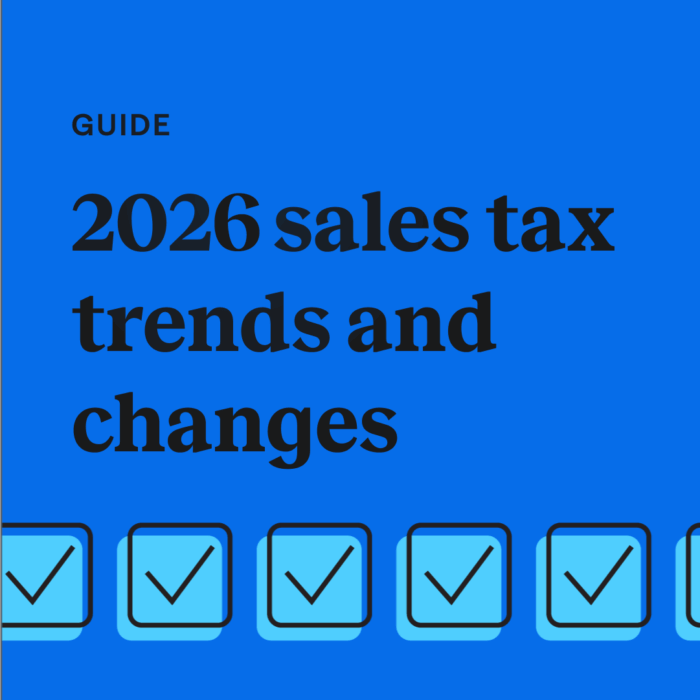Five steps international sellers should take before selling in the US
by June 1, 2025
Just like any other major business move, deciding to expand your customer base to another country is a decision that requires extensive research. Opening up your digital doors to users in a new country will also open you up to more laws, regulations, and tax challenges. Oftentimes, retailers consider the sales tax implications of moving internationally too late, and find themselves playing an endless (and costly) game of catch up.
Before you expand your business to the US, here are five sales tax steps to take into consideration.
Understand economic nexus laws
If you’ve been focusing your sales efforts outside of the US, you are likely accustomed to dealing with value-added tax (VAT) or consumption tax in other countries. In the US, sellers have to deal with sales tax, which is centered around a concept called sales tax nexus.
Sales tax nexus occurs when a business has some kind of connection to a state. There are two ways that sellers can meet the nexus requirements in a state: physical or economic. Physical nexus means having enough tangible physical presence or activity in a state to merit paying sales tax in that state. Economic nexus means passing a states’ economic threshold for total revenue or the number of transactions in that state. Each state has their own definition for what constitutes nexus in their state, but it is usually a sales transaction amount, or revenue threshold.
Once you’ve met nexus in a state, you must begin collecting state, city, and any special jurisdiction sales tax from customers in that state. Therefore, it’s crucial to be aware of a state’s economic nexus laws before making sales there, so you can register and begin to charge sales tax when you have new sales tax obligations.
Register for sales tax permits
Before you collect tax in any state, you first need to register for a sales tax permit. Let’s walk through an example. You are expanding your e-commerce business to the US, and are going to begin making sales to customers across multiple states. It’s going well and you just made your 150th transaction in Wyoming. As we explained earlier, once you hit 200 transactions in Wyoming (Wyoming’s economic nexus threshold), you will be required to collect and remit sales tax from customers in the state. Before you collect any tax from customers though, you will first need to register for a sales tax permit in the state. Collecting sales tax without registering is illegal, and can come with severe consequences including penalties and interest.
Here are a few important notes about sales tax permits:
- You only need to register in states where you have sales tax nexus, not every state in the US
- Economic nexus laws vary by state, so it’s important to monitor your sales to ensure you register when you hit a new threshold
- Each state has a different process for sales tax permit registration. Here’s a state-by-state guide.
Check your warehouses
Even though you may live outside the US, you might still have to consider physical nexus. That’s because storing inventory in warehouses often creates sales tax nexus – a fact often overlooked by international sellers. This includes selling on Amazon, and using FBA to distribute your inventory. While marketplace facilitators like Amazon are required to calculate and collect sales tax on behalf of sellers in most places (more on marketplace facilitator laws here), most states still require the seller to file a sales tax return on the due date, so international sellers must be aware of where their inventory is located.
For international sellers using FBA, here is a list of warehouse locations.
Prepare to file and remit
Once you have calculated and collected sales tax where you have obligations, you must report and remit the tax collected to the appropriate state. Each state has its own taxing authority, and sales tax due dates vary across the country. Not to mention, sellers not only have to worry about state sales tax, but also city, county, and special taxing jurisdictions.
Research sales tax solutions
Sales tax solutions like TaxJar help companies automate the sales tax cycle. We help calculate the correct amount of sales tax, and let you know when you are approaching nexus in a new state, so you can register for sales tax permits ahead of time. And when it comes time to submit the sales tax you’ve collected to the state, we can handle that as well, with our AutoFile solution.
If you need help managing your global tax obligations, Stripe Tax might be a good fit for your business since TaxJar only manages US sales tax. Stripe acquired TaxJar in 2021 to accelerate the future of e-commerce. Available in over 50 countries, Stripe Tax enables you to automatically calculate and collect the right amount of tax based on where you are registered, where your customers are located, and what you are selling. Stripe Tax also helps you monitor your obligations and provides reporting for filing and remittance. Learn more about Stripe Tax here.
Looking for a tax rate for another country? We recommend using Stripe’s VAT calculator or GST calculator.








